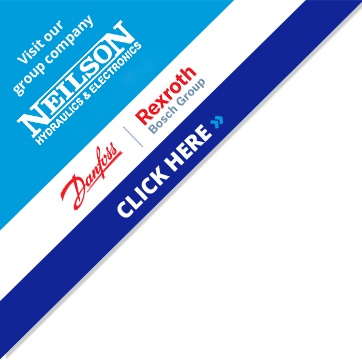In the world of fluid power systems, there exists an often overlooked yet indispensable component - the check valve. These unassuming valves can be found in nearly every industrial and mobile hydraulic system across the globe. In essence, wherever there's a pump, chances are you'll find a check valve.
The primary role of check valves is to ensure that fluids flow in the desired direction, preventing any detrimental backflow or pressure issues. They also serve the purpose of maintaining system pressure, thereby optimizing system performance and readiness. Surprisingly, given their critical function, check valves comprise only a few essential components: A basic check valve consists of four key components: the body, seat, disc, and cover. Depending on the design and function of the check valve, additional components such as springs, balls, stems, and hinge pins may be incorporated into the basic elements.
Considering their extensive usage, engineers, maintenance technicians, and end users must have a basic understanding of the invaluable function that check valves serve in their systems. It's crucial to recognize that check valves play a pivotal role in maintaining fluid flow in the intended direction, making them indispensable for various reasons.
Where and Why to Utilize Check Valves
Maintaining Prime/Pressure: Commonly used in fuel systems to retain prime, facilitating ease of maintenance and quick startup. In hydraulic systems, check valves are indispensable for preventing pump oil starvation during startup.
Cooler Protection: Preventing damaging pressure spikes can be achieved by redirecting pressure and flow. This application is widespread in both mobile and industrial settings, particularly with hydraulic and lubrication oil coolers.
Pump Protection: Systems with multiple pumps can significantly extend their service life by using check valves to isolate and safeguard these components from potential system failures. This applies to scenarios such as high/low pump configurations or emergency pumps in mobile systems.
Actuator Flow Control: When precise speed control of an actuator is necessary for operator safety, incorporating check valves in the lift and lower circuits is crucial. This is observed in equipment like forklifts, aerial work platforms, or large equipment hood systems.
In conclusion, a check valve, despite its relatively modest cost, plays a vital role in safeguarding much more valuable system components. Implementing check valves can save companies thousands of dollars and pounds by protecting these critical elements. Given the stakes involved, it's only prudent to choose a dependable, high-quality product that can perform admirably even under the most extreme conditions.
To enquire or speak to our technical team about all your hydraulic solutions and requirements please contact VHS Hydraulic Components at: 0114 276 4430 / E: info@hydraulic-components.net or visit our website at: https://www.hydraulic-components.net





 No Minimum Order
No Minimum Order














